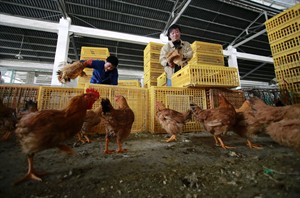Five changes can make H5N1 bird flu virus transmit among mammals, study finds

TORONTO – A new study suggests as few as five mutations can give an H5N1 bird flu virus the capacity to transmit among mammals instead of birds.
The just published study builds on some highly controversial research done to try to determine what changes would be needed to make these bird flu viruses able to infect people and spread among them like seasonal flu viruses.
The earlier work was blocked from publication for a number of months while a U.S. government advisory committee argued that putting papers outlining needed changes into the public domain was a biosecurity risk.
Those earlier studies, which were eventually published in the spring of 2012, found that more changes were needed.
But this work, by Dutch scientists, shows that with only five mutations an H5N1 virus from Indonesia can transmit from infected ferrets to nearby healthy animals.
Senior author Ron Fouchier says this minimum set of mutations is one way the virus could achieve airborne transmission but is not the only way that transformation could come about.
One of the members of the U.S. advisory group who objected to the publication of the earlier work was dismayed to see this study published.
Michael Osterholm, director of the Center for Infectious Diseases Research and Policy at the University of Minnesota, says publishing these details will allow other laboratories to engineer these viruses.
If lab accidents led to the escape of these transmissible H5N1 viruses from one of those facilities the results could be catastrophic, Osterholm says.
Fouchier believes the risk of that is low.
One important thing to note: The changes identified by Fouchier’s team appear to weaken the bird flu viruses.
To date about 60 per cent of people known to have been infected with H5N1 have died, leading to serious concerns about what the virus would do if it acquires the ability to easily infect people.
But in this study the two viruses the team developed that were able to transmit mammal to mammal did not kill any of the infected ferrets.
Ferrets are often used as stand-ins for humans in influenza studies.
Join the Conversation!
Want to share your thoughts, add context, or connect with others in your community?
You must be logged in to post a comment.


















